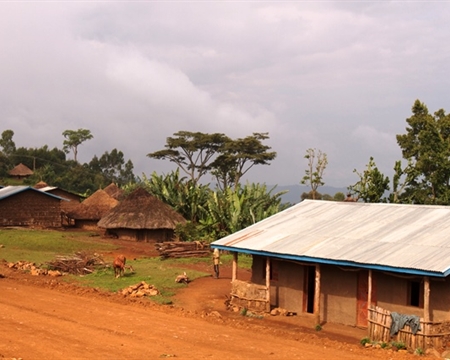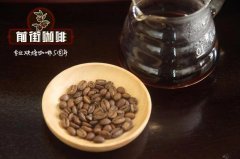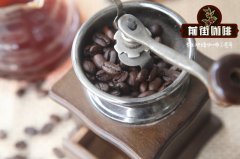I've heard of Panamanian red wine treatment, but have you ever heard of Ethiopian red wine treatment?
Professional coffee knowledge exchange more coffee bean information please follow the coffee workshop (Wechat official account cafe_style)
For many coffee lovers, Ethiopian coffee is simply an incentive to enter the pit, but the coffee produced here is basically washed or tanned, and honey treatment is rare. However, the Ethiopian coffee that Qianjie Coffee wants to share with you today is red wine!
Ethiopia GUJI Hambella Deri
Ethiopia Deli
Country of origin: Ethiopia Ethiopia
Producing area: Guji GUJI
Variety: local native species Heirloom
Altitude: 2000-2200 m
Grade: G1
Treatment method: red wine treatment
Ethiopian Guji
Ethiopia is in Africa, which is a world-famous coffee producing area. Ethiopia has a near-legendary status among so many producing countries, partly because it is the birthplace of Arabica coffee, and partly because the coffee flavor produced here is different from that of other producing countries.

Guji producing area is a producing area that has attracted much attention in recent years, and it has made good achievements in flavor display and quality in recent years. The Guji production area once belonged to the Sidamo production area, but it has been independent into a new production area by the Ethiopian Commodity Exchange (ECX) in 2010.
The Guji region, located in the southeast of Yegashefi, is adjacent to Sidamo and Gaideo, and is an area with complex topographical changes such as towering mountains, highlands, plateaus, valleys and plains.

The geology of this area belongs to the nutrient-rich black soil (Vertisol), the depth of the soil is nearly two meters, and the average elevation is more than 1800 meters. The significant temperature difference between day and night created by geographical characteristics makes the local area have various local conditions for producing high-quality coffee.
The biggest advantage here is that the soil vitality is maintained through the circulation of natural organic matter, using the withered leaves or litter of surrounding trees, plant residual roots and so on as natural fertilizer. Native species Heirloom
Regular Ethiopian coffee drinkers should have heard of the [original species of Heirloom], most Ethiopian varieties will be named after this name, in fact, because there are so many Ethiopian varieties, it is like the natural gene bank of Arabica, on the one hand, there are many varieties, and it is difficult to identify and classify them, on the other hand, the Ethiopian government is unwilling and unable to disclose these varieties for the sake of protection. The concept of variety will not be named until it is selected and bred in the process of agricultural cultivation. Coffee as a local native crop, various varieties are not artificially planted, and naturally there will be various varieties mixed together, so it is collectively called [Heirloom native species], which is also the reason why the flavor is changeable and uncontrollable.

Red wine treatment method Red Wine
Red wine treatment, also known as carbon dioxide impregnation, is inspired by the brewing technology of red wine. different from the traditional process of pressing grapes and fermenting wine, it puts the whole bunch of red grapes directly into an airtight container full of CO2, and finally gets a red wine with light color, strong fruit aroma and excellent taste after slow anaerobic fermentation.

The concept of this process is introduced into the coffee treatment process, and the peel of the coffee bean is removed and put into a stainless steel container filled with carbon dioxide and oxygen in the fermentor, thus creating a closed and anaerobic environment, so that the coffee fruit undergoes strictly controlled anaerobic fermentation, thus developing more aroma and high-quality sour taste of the coffee. Analysis of roasting curve of Qianjie coffee
Roaster Yangjia 800N (baking capacity 300g)

The furnace temperature reaches 160℃ into the pot, the throttle opens 4, the firepower 120s, and the temperature recovery point 1mm 39 ℃ 26 ", 107.1 ℃; after the furnace temperature 140℃, the bean meter begins to turn yellow, the grass smell disappears completely, and enters the dehydration stage, and the firepower is adjusted to 110 when the furnace temperature reaches 166℃; when the furnace temperature reaches 166℃, the firepower is adjusted to 90 ℃, the throttle remains unchanged.

The smell of toasted bread has obviously changed to the smell of coffee, which can be defined as a prelude to an explosion. At this time, it is necessary to listen carefully to the sound of the explosion point, until the sound of the explosion point begins to explode. The throttle should be adjusted to 5 (the tuning power should be very careful not to be so small as to be free of burst sound). After an explosion, the development of a cup of toast will obviously change to the smell of coffee, which can be defined as a prelude to an explosion. ℃ put into the pot.

Cup test flavor: fermented wine, red wine, grape, tropical fruit Qianjie coffee sharing brewing parameters
The recommended brewing methods of Qianjie coffee are as follows: hand brewing 1, filter cup: Hario V602, grinding degree: medium fine grinding (BG 5T: Chinese standard No. 20 sieve pass rate 58%) 3, water temperature: 90 ℃ 4, ratio of powder to water: 115: 165, brewing technique: segmented extraction
Steaming with 30 grams of water, the steaming time is about 30 seconds, 90 grams of water is injected around the center of the small flow, that is, 120 grams of water is divided into sections, and when the water level is about to expose the powder bed, continue to inject water to the end of 240 grams, remove the filter cup when the water level is about to expose the powder bed, and (the time of steaming starts) the extraction time is 1 kilogram 39 percent 50 ".
Flavor: Shixiang has the aroma of red wine and roses, with the flavor of jackfruit, grape and toffee, with a touch of tea at the end.
END
Important Notice :
前街咖啡 FrontStreet Coffee has moved to new addredd:
FrontStreet Coffee Address: 315,Donghua East Road,GuangZhou
Tel:020 38364473
- Prev

Coffee internal structure layer decomposition, understand the coffee internal structure to give coffee flavor conditions!
Professional coffee knowledge exchange More coffee bean information Please pay attention to coffee workshop (Weixin Official Accounts cafe_style) Coffee tree is a perennial evergreen shrub or small tree belonging to Rubiaceae. The mature fruit of coffee tree is called coffee cherry in the industry because it is similar to cherry. This time it's not about coffee.
- Next

Summer brewing| Front Street Coffee Colombia Mitra Estate Sunrise Summer Brewing Share
Professional coffee knowledge exchange More coffee bean information Please pay attention to coffee workshop (Weixin Official Accounts cafe_style) Two days ago Street Coffee introduced to you a sun-baked rose in Colombia Mitra Manor. Today, it is almost the same, so it will be washed!| Bean information Colombi
Related
- Why are the coffee in some coffee shops not enough after being frozen? What should I make up for my American latte cappuccino coffee after being frozen?
- How much water does it take to steam coffee by hand? Why is the coffee brewing and steaming time 30 seconds? What is the purpose of steaming coffee?
- The suspected drink contains too much caffeine! Overlord Tea Lady responds urgently!
- Starbucks rejects antique paper coupons?! Netizen: Missed marketing opportunities!
- What ratio of water temperature and ground does the smart cup method use to press coffee? The difference between brewed coffee and filtered coffee?
- What is the standard process for the purpose of coffee cup testing? What is the difference between hand-brewed coffee and cup testing?
- How to use hand-brewed coffee paragon small golden balls? How does cold coffee lock in the aroma of coffee?
- Is American coffee black? What is the difference between American coffee and drip coffee?
- Unexpected! Well-known tea beverage brand Lele Tea will withdraw from the Zhengzhou market!
- Starbucks enters the fashion and beauty industry?! Netizen: Give me an ice American eye cream

